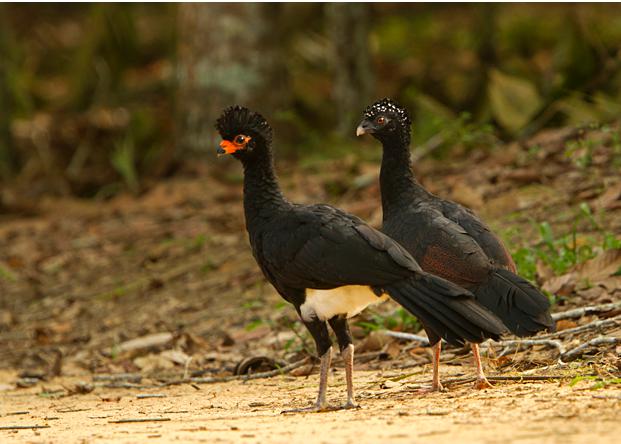Christine Steiner Sao Bernardo
The aim of this project is to provide the red-billed curassow relative abundance (number of sightings/ km walked) in the study area, for a better understanding of its conservation status.

Brazil holds 6 cracids which are threatened mainly by hunting and deforestation. One species is extinct in the wild, 3 are endangered and 2 are vulnerable to extinction. The red-billed curassow Crax blumenbachii is one of the endangered cracids, which is endemic to a very small part of the eastern Brazilian Atlantic rainforest. Currently populations occur in less than 10 remnants of Bahia and Espírito Santo, with populations reintroduced in Rio de Janeiro and Minas Gerais state. Assessment of these natural populations is needed to ensure the conservation of the red-billed curassow and to contribute to future population monitoring.
Conduru State Park, located in Bahia, was created in 1997 and encompasses 9,000 ha. Although the species was last sighted in 2003 and no population assessment was conducted there, red-billed curassows are thought to be still extant in this Atlantic rainforest area. Thus, line transect methodology and camera traps will be used, providing species relative abundance described as the number of sightings/ km walked. Surveys will occur during the reproductive (September- February) and non-reproductive season (March- August) and a minimum of 90 km will be walked each season between 05:00 and 17:30. The principal investigator will walk slowly along known transects (maximum speed of 1km/h) and record each red-billed curassow observed, collecting data on observation time, GPS co-ordinates, number of individuals and the perpendicular distance to the line transect (accurately obtained with a measuring tape). Date and total distance walked will also be recorded. Line transects have been used successfully in Vale reserve (Espírito Santo state), Michelin farm, Descobrimento National Park and Una Biological Reserve (Bahia state).
The use of the same methodology allows comparison between areas. Camera traps were used successfully in Vale and Descobrimento National Park, and the method proved to add important information to data collected with line transect methodology. The camera-traps will confirm the presence of the species and pictures will be a fundamental tool for environmental education. These data are useful for contributing to updates to the species conservation status and monitoring the population in the long term. Information from the proposed project will help on planning management strategies for the red-billed curassow.